For more than five decades, the Arms Control Association has served as an authoritative source of information and ideas on security challenges for scholars, reporters, diplomats, students, and activists.
ACA has shaped the national and international debate on nuclear weapons and arms control and served as a forum for creative solutions through the monthly journal Arms Control Today and other publications.
Our board and staff have engaged with decision-makers and collaborated successfully with a diverse range of organizations and experts to put practical arms control, nonproliferation, and disarmament proposals into action.
Our goal: to reduce and eliminate the risks posed by the world’s most dangerous weapons.
Join us as a 50th Anniversary Sponsor and help propel us forward to another successful half-century toward this goal.
Skip to: 1970s, 1980s, 1990s, 2000s, 2010s, 2020s
1970s
1971-1972: Originally founded as a project of the Carnegie Endowment for International Peace, the Arms Control Association became an independent nonpartisan, nongovernmental organization in 1972. Its founders included many of the former senior military, defense, and diplomatic officials involved in the early years of nuclear and chemical arms control and nonproliferation. Among them were the first Director of the Arms Control and Disarmament Agency William C. Foster who helped negotiate the 1963 Limited Test Ban Treaty and the 1968 Nonproliferation Treaty, who later became ACA’s first Board Chair. Gerard Smith, the chief negotiator of the 1972 Strategic Arms Limitation Treaty and Anti-Ballistic Missile Treaty, later became ACA’s second Board Chair.
1974: Arms Control Today debuted as the new name of the monthly journal of the Arms Control Association.
1975: The Association co-hosted a three-day international conference in France on policy recommendations for governments before the first-ever nuclear Nonproliferation Treaty (NPT) review conference
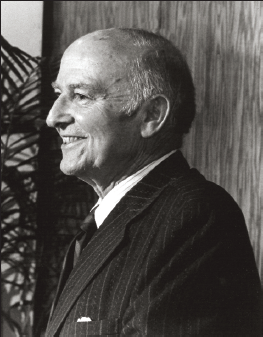
1976: Arms Control Today posed arms control questions and answers with presidential candidates Gerald Ford and Jimmy Carter, inaugurating a regular feature in presidential election years.
1977: The Association co-hosted the first of several annual international meetings for young arms control analysts and scholars (New Faces Conferences). The Arms Control Association has served as a training ground, helping to launch the careers of many men and women who later served in high government positions.
1978: ACA Executive Director William Kincade worked with freelance journalist Nan Randall to help write a fictional account of a nuclear attack on a U.S. city, which inspired the writer and director tapped to create the 1983 movie, The Day After. The film boosted public awareness of the risks of nuclear war and put pressure on policymakers to take action.
1979: President Herbert Scoville, Jr. helped to lead non-governmental opposition to the MX ICBM and two years later published MX: Prescription for Disaster. The Arms Control Association also published Negotiating Security: An Arms Control Reader, the first of many books and studies.
1980s
1982: The Association helped organize Ground Zero Week to educate the public about nuclear weapons, nuclear war, and arms control solutions at a time of high U.S.-Soviet tensions.
 1983: The Association commemorated the 20th anniversary of the Limited Test Ban Treaty by honoring its chief U.S. negotiator, W. Averell Harriman, and led a call for the renewal of comprehensive test ban treaty talks.
1983: The Association commemorated the 20th anniversary of the Limited Test Ban Treaty by honoring its chief U.S. negotiator, W. Averell Harriman, and led a call for the renewal of comprehensive test ban treaty talks.
1984: The Association helped establish the National Campaign to Save the Anti-Ballistic Missile (ABM) Treaty and warns against the destabilizing and costly impact of the Strategic Defense Initiative.
1985: Arms Control Today expanded from newsletter to journal format, which physicist Hans A. Bethe praised the following year as “by far the best magazine in the field.”
1986-87: The Scoville Visiting Lectureship program is launched and the Association began serving as a host organization for the Scoville Peace Fellowship Program to help bring young scholars into the field.
1989: The Association published the book-length primer, Arms Control and National Security: An Introduction.
1990s
1991: Arms Control Today received the 1991 Olive Branch Award for “outstanding” coverage of international security for a notable series of articles on the potential for terrorist acquisition of nuclear weapons material in the former Soviet Union.
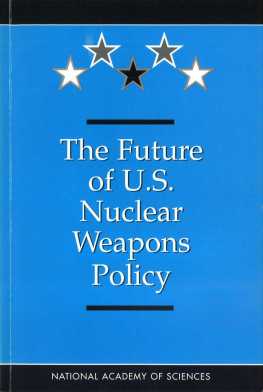
1994-95: The Association played a major role in the Campaign for the NPT supporting the accord’s indefinite extension and strengthening of the nuclear-weapon states’ commitments to nuclear disarmament, including the Comprehensive Test Ban Treaty.
1997: The Association's web site www.armscontrol.org was launched, making Arms Control Today and other research products available to millions of readers worldwide through the internet.
1997: Executive Director Spurgeon Keeny, Jr. and several Board Members served on National Academy of Sciences study panel on the Future of U.S. Nuclear Weapons Policy, which recommended reducing the nuclear arsenal to fewer than 1,000 warheads.
1997-2000: The Association and other members of the Coalition to Reduce Nuclear Dangers (led by future ACA Executive Director Daryl G. Kimball) waged a high-profile, but unsuccessful, bid to win Senate approval of the Comprehensive Test Ban Treaty and preserve the Arms Control and Disarmament Agency as an independent entity.
2000s
2001: The Association exposed and helped counter efforts by George W. Bush administration hardliners to repudiate the U.S. signature of the Comprehensive Test Ban Treaty.
2002: The Association became the leading nongovernmental critic of the George W. Bush administration’s decision to withdraw from the ABM Treaty and to pursue new nuclear capabilities to destroy non-nuclear targets.
2002: The Association publicly urged the United States to restart talks with North Korea on the implementation of its nonproliferation commitments and prevent the restart of its weapons program.
2002: Arms Control Today published a special report on the history, findings, and status of arms inspections in Iraq, and became a leading for continued UN inspections to ensure the elimination of prohibited weapons and missiles.
2003: At a press conference featuring former U.S. intelligence officials, the Association drew national attention to the Bush administration’s “cherry-picking” of information on WMD in Iraq that was used as the basis for launching the U.S. military invasion.
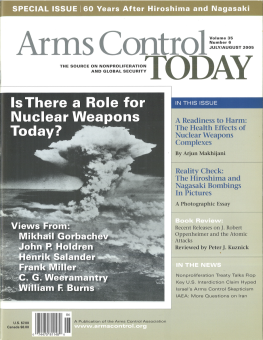
2003: Arms Control Today published a key article by a group of physicists and diplomats on the negative impact of new U.S. earth-penetrating nuclear weapons, which sparked prominent members of the House and Senate to launch a successful campaign to stop the proposal.
2004: Arms Control Today was redesigned for the first time in nearly two decades.
2004: National Journal profiles Director Daryl Kimball as one of the 10 people whose ideas “will help shape the debate on nuclear weapons and nonproliferation in the years to come.”
2005: The Washington Post cited the Association as having successfully led the opposition to a proposal for research and development of a new U.S. earth-penetrating nuclear weapon
2005: The Association launched a “Campaign to Strengthen the NPT,” which organized bipartisan support for a comprehensive U.S. nonproliferation strategy ahead of the 2005 NPT Review Conference.
2005: The Association published the influential report What Are Nuclear Weapons For? by Dr. Sidney Drell and Amb. James Goodby calling for steep nuclear reductions to 1,000 strategic warheads.
2005-08: Against long odds, the Association led a campaign involving a diverse national and international coalition of NGOs and experts against exempting India from U.S. and global nuclear trade restrictions that almost tipped the balance against the deal. The campaign moved the U.S. Congress and the George W. Bush administration put key nonproliferation restrictions in place.
2006: The Association published an analysis highlighting the risks posed by a planned Iranian reactor at Arak capable of producing large quantities of plutonium, which prompted New York Times coverage and action by IAEA member states to stop technical assistance for the project.
2007: The Association developed a detailed legislative proposal for a comprehensive strategy to strengthen the nonproliferation and disarmament system, which was embraced by Sen. Barack Obama and Sen. Chuck Hagel and introduced as S. 1977 in August 2007. The bill became the blueprint for President Obama’s nuclear risk reduction strategy outlined in his speech in Prague in 2009. Sen. Obama later wrote to ACA and its leadership to send a personal "thank you for your substantial contribution" to the legislation.
2008: The Association published reports and articles by staff and by Board Member Rose Gottemoeller that provide ideas for the negotiation of a new strategic arms reduction treaty with Russia, which would begin the following year.
2008: Arms Control Today published an extensive Q & A with president-elect Barack Obama on his views and policies on nonproliferation and disarmament.
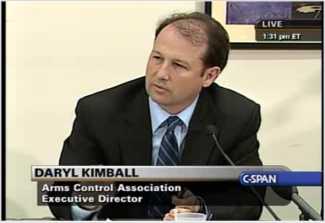 2009: The Project for the CTBT was created to coordinate public and policy education efforts on the CTBT. At the request of the Presidential Transition Team, Association staff provided recommendations for test ban policy.
2009: The Project for the CTBT was created to coordinate public and policy education efforts on the CTBT. At the request of the Presidential Transition Team, Association staff provided recommendations for test ban policy.
2009: The Association augmented its research staff and launches new projects and reports with a focus on resolving threats posed by the Iranian nuclear and missile programs, improving nuclear material security, and securing ratification of the Comprehensive Test Ban Treaty and the New Strategic Arms Reduction Treaty (New START).
2009: Executive Director Daryl Kimball spoke before the first U.S. Strategic Command conference in Omaha on deterrence making the case for reducing the role of nuclear weapons to solely “deterring the use of nuclear weapons by other states.”
2010s
2010: The Association played a leading role in the nongovernmental effort to build public understanding and support for the New Strategic Arms Reduction Treaty, which was narrowly approved by the Senate.
2010: The Association launched a series of conferences in Brussels, Warsaw, Ankara, and Washington on revising NATO’s nuclear policy and the future of U.S. tactical nuclear bombs in Europe.
2011: The MacArthur Foundation recognized the Arms Control Association as an “exceptional organization that effectively addresses pressing national and international security challenges” with an “impact that is disproportionate to its small size,” and provided a major capacity-building grant.
2011: Following ratification of New START, the Association drew attention to the excessive cost and scope of U.S. plans to modernize all three legs of the nuclear “triad” and provided a detailed blueprint for achieving hundreds of billions in budget savings at current and lower nuclear force levels.
2011-16: The Association launched a series of widely-praised research reports that document—and seek to hold governments accountable—to the milestones and commitments agreed at their Nuclear Security Summits.
2012-present: The Association helped establish a 21-member U.S.-German-Russian experts commission to maintain an ongoing dialogue on how to address the growing obstacles to deeper nuclear weapons cuts. The Commission's reports and papers provide a practical plan for how Russia and the West can step back from the brink and renew dialogue and restraint.
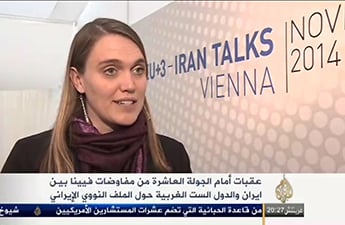
2013-15 : The Association provided detailed analysis and information that shaped the thinking on the negotiations leading to the historic nuclear deal between Iran and six world powers, including an influential Arms Control Today article outlining an option for resolving concerns about Iran’s Arak reactor and an Arms Control Association-International Crisis Group white paper on a “Win-Win Formula for Defining Iran’s Enrichment Capacity .”
Association staff launched the “P5+1 and Iran Nuclear Talks Alert” e-newsletter, which later became the “P5+1 and Iran Nuclear Deal Alert,” and closely monitored the Iran nuclear talks on-site in Vienna, Geneva, Lausanne, and New York, and provided regular updates and commentary read by thousands of reporters, analysts, and policymakers.
2014: The Association rolled out an expanded and updated version of its www.armscontrol.org website for its growing audience of more than 1.5 million unique visitors each year.
2014: Through the leadership of Board Chair John Steinbruner, the Association facilitated a historic U.S.-Iranian Religious Leaders Dialogue on the moral questions of nuclear weapons, which brought together top U.S. Catholic Bishops and Iranian clerics and produced a joint statement.
2014: The Association hosted the first Jonathan Tucker Conference on Chemical and Biological Arms Control with a special focus on the successful UN-OPCW mission to remove 1,300 tons of chemical weapons agents from war-torn Syria.
2014: The Association supported a nongovernmental campaign to bring the United States on board international negotiations to develop a treaty to set a basic set of standards and norms for the conventional arms trade, which helped lead to the Obama administration's decision to sign the Arms Trade Treaty in 2014.
2015: The Association organized statements demonstrating the overwhelming expert support for the Iran deal and became a go-to source for Congressional staff, as well as a diverse network of pro-diplomacy organizations, thereby helping to secure the Congressional support necessary to implement the agreement.
2015-17: Association staff engage with key governments, civil society leaders, and the media to help promote the adoption of what would become the 2017 Treaty on the Prohibition of Nuclear Weapons (TPNW) and to ensure the text was as technically sound and comprehensive. At the conclusion of negotiations on the TPNW, ACA praised the result as an important step that “could help to further delegitimize nuclear weapons and strengthen the legal and political norm against their use.”
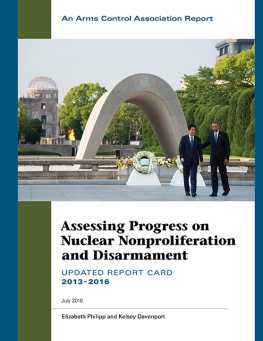
2016: After months of campaigning by a broad network of organizations, including the Arms Control Association, President Barack Obama became the first sitting U.S. president to visit Hiroshima, the site of the first atomic bombing.
2016: The Arms Control Association published the latest in a series of comprehensive reports documenting the performances of the world's nuclear-armed "threshold" states in meeting key disarmament and nonproliferation standards and commitments.
2016: Prompted by a research and advocacy campaign led by the Arms Control Association, along with the Stimson Center, the UN Security Council adopted Resolution 2310 on Sept. 23, which reinforces the global norm against nuclear testing and calls for action on the Comprehensive Test Ban Treaty (CTBT) on the 20th anniversary of the opening for signature of the treaty.
2017: The Association help rally opposition to President Trump’s threats of “fire and fury” against North Korea for its nuclear and missile tests and successfully made the case for direct U.S.-North Korean diplomacy on denuclearization and peace.
2018: The Arms Control Association advanced options to resolve the U.S.-Russian dispute over Russian compliance with the INF Treaty and mobilized bipartisan support for a decision to extend the New START agreement past 2021.
2018: Responding to the Trump administration’s unilateral withdrawal from the 2015 Iran nuclear deal, the Arms Control Association warned that the move would unnecessarily trigger a new nuclear crisis. Along with nongovernmental allies, the Association lobbied for the United States and Iran to return to compliance with the deal, and to pursue follow-on talks designed to make the 2015 deal "longer and stronger."
2019: The Arms Control Association’s major research report “Nuclear Excess: Understanding the Costs, Risks, and Alternatives” documented why the Trump administration’s $1.7 trillion, 30-year plan for nuclear weapons recapitalization plans is unnecessary, unsustainable, and unsafe, and it outlined realistic options to significantly reduce nuclear weapons spending.
2020s
2020: After learning about interagency discussions in which some U.S. officials proposed the resumption of nuclear testing for the first time in 28 years, Arms Control Control Association staff helped key reporters blow the whistle on the effort. ACA then lead a successful lobbying effort in Congress to prohibit funding for the resumption of testing.
2019-2021: The Arms Control Association successfully mobilized bipartisan support for military and national security leaders and on Capitol Hill for a five-year extension of the New START agreement. Board Chairman Thomas Countryman testified on Capitol Hill that "in the absence of New START, there will be no legally-binding limits on the world's two largest nuclear arsenals for the first time since 1972," which would open the door to a dangerous new arms race. In keeping with the recommendations forwarded to the Biden transition team, President Biden and President Putin agreed in February to extend the treaty until February 2021, and following their June Summit they agreed to pursue talks on follow-on arms control agreements.
2021: The Association launched a new "Arms Control Tomorrow" project in conjunction with the European Leadership Network, to evaluate and develop practical policy options to regulate potentially disruptive emerging technologies, including hypersonic weapons, offensive cyber weapons, lethal autonomous weapons, and other emerging technologies.
 2007-present: Each year for more than a decade, the Association has recognized and the public has voted online for the “Arms Control Person of the Year” to celebrate the work of key leaders and institutions that have advanced effective arms control, nonproliferation, and disarmament solutions, and/or raised awareness of the threats posed by mass casualty weapons.
2007-present: Each year for more than a decade, the Association has recognized and the public has voted online for the “Arms Control Person of the Year” to celebrate the work of key leaders and institutions that have advanced effective arms control, nonproliferation, and disarmament solutions, and/or raised awareness of the threats posed by mass casualty weapons.
